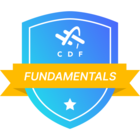Using the figure from the documentation for my question regarding mapping (below).
In the figure, a new view called BasicPump is created by mapping attribute “manufacturer” from Equipment container, and “maxPressure” from Pump container.
If the attributes “manufacturer” and “maxPressure” are indexed in their respective containers, does the view BasicPump benefit from these indexes?

Ref: https://docs.cognite.com/cdf/dm/dm_concepts/dm_containers_views_datamodels/





